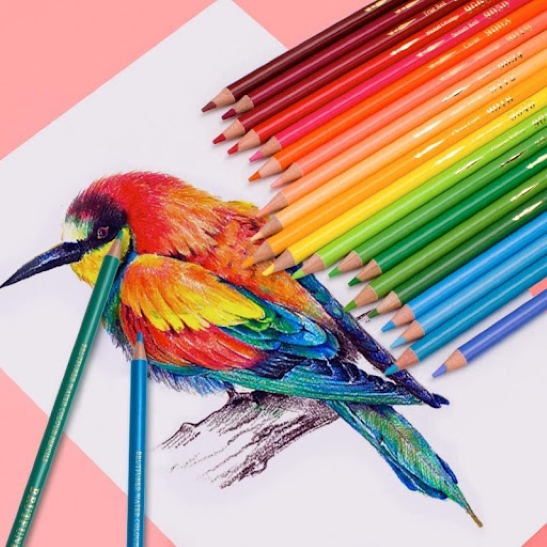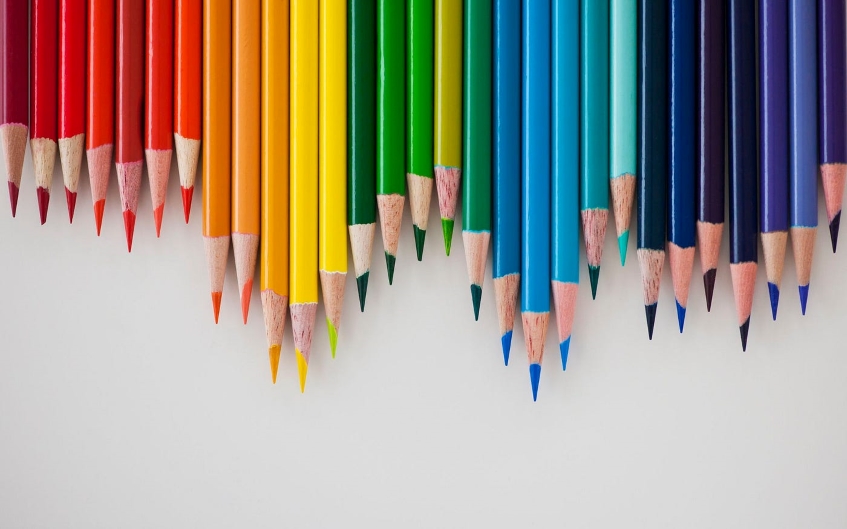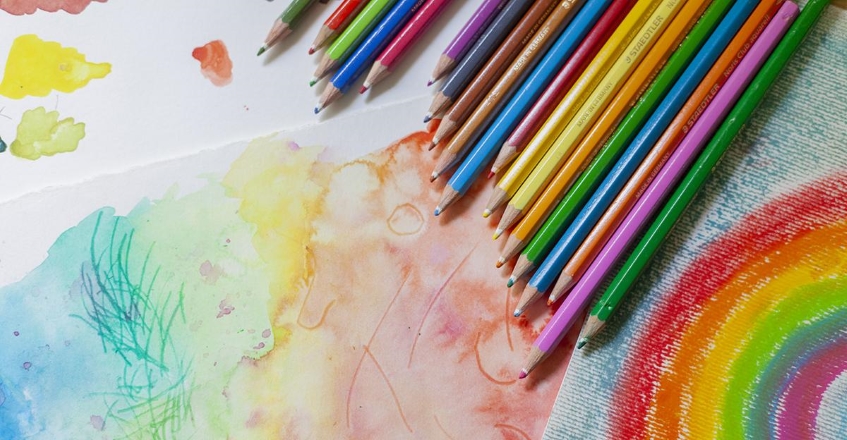Artists have a wide range of art mediums to choose from, however, one of the most popular ones is colour pencils. They are easy to use, a lot cleaner and require almost no set-up compared to other types. Whether you’re completely new to coloured pencils or looking to learn more about this versatile medium, this article will cover everything you need to know before utilizing them.
Types

Turn your art into a masterpiece with a premium quality colour pencil range. Regardless of your type, coloured pencils can be used to create expressive, abstract, or detailed, photorealistic art styles. While they are slower to use than wet media such as paint, in terms of colour application, they are nearly unrivalled in control and detail.
Wax-Based
Most colour pencils for sale are wax based. The right amount of wax provides the pencil with a smooth texture, allowing the pigment to glide across the surface. The wax also helps the mark attach to the surface or additional layers of pencil, allowing you to apply numerous layers without worrying about spreading or adherence which is a common problem with pastels.
Wax-based pencils come in a variety of consistencies, ranging from hard pencils for students to soft pencils meant for experts. Because wax-based pencils are so ubiquitous, you’re likely to find a set that meets your pricing, quality, and consistency requirements.
The only downside to the wax-based type is wax bloom, which is a natural oxidation process that can cause the wax to rise to the surface of your artwork, leaving a pale haze.
Oil-Based
Oil-based coloured pencils bond and disperse the pigment on the surface (but they still include wax). In practice, this implies that they have a slightly different consistency and are resistant to wax bloom. Most oil-based pencils are medium soft, slightly stiffer than wax-based ones but softer than student-grade pencils. Although still extremely smooth, they will not lay down colour as rapidly, but they are better at retaining a point and might be more adaptable.
Oil-based pencils do have a few drawbacks, though. They’re more prone to smearing and are harder to erase. They also tend to be more expensive and may have a more limited colour range.
Water-Soluble
Watercolour pencils may produce watercolour paintings when combined with water and a brush or sponge to blend colours or create washes. Other effects can be obtained by drawing on damp paper or soaking the pencil tip in water beforehand. Quality varies widely between brands, as does pricing, even when looking for artist-grade products.
Quality
In terms of quality, the main question is whether to use an artist or student-grade colour pencil. If your budget allows, always choose artist-grade pencils, as they are superior. They do cost more, but this is because they contain a higher proportion of pigment, resulting in richer, stronger colours.
Artist-grade pencils are also more lightfast and typically softer, making them easier to use and mix. They will also have a greater colour selection, and you will be able to purchase them individually as needed (known as “open stock”).
Consistency

One of the most important factors influencing your enjoyment of coloured pencils is the consistency of the “lead”. This can vary between brands and pencil types, depending on the manufacturer’s specific blend of components. Most artist-grade pencils are softer, in part because they contain less binder and filler and more pigment, resulting in stronger, more brilliant colours. One disadvantage of soft pencils is that they do not keep a point as well and require more frequent sharpening.
Hard coloured pencils, on the other hand, can be sharpened to a very thin point that does not crumble, allowing for fine lines suitable for detailed artwork and certain textures. The majority of student-grade coloured pencils are hard. The hard alternatives can also be less enjoyable to use because they require more effort to add colour, make blending more difficult, and encourage you to press harder, which might damage your paper and possibly cause hand fatigue.
Hues
Since coloured pencils cannot be mixed as easily as other media (such as paint) to generate new hues and tones, most artist-grade coloured pencils are available in a variety of colours. It’s tempting to go overboard, but you don’t want to buy pencils you’ll never use. Therefore, begin with a 24-pencil set, and then add extra hues as needed.
Permanence
All art media fade with time as light and humidity break down the molecular connections of the colours. “Lightfastness” is the ability to resist this process, and it is a crucial problem for fine painters who want their work to last.
If you’re using artist-grade pencils and aren’t a skilled artist, don’t be concerned about lightfastness. Because coloured pencils employ pigments rather than dyes, which fade more easily, artist-grade coloured pencils will be adequately fade-resistant for most artists, especially if you want to digitise your artwork for the web or print.
If you’re, however, particularly concerned with persistence, keep in mind that it varies not only across brands but also between pencils within the same brand, depending on the individual pigment used for each colour.


